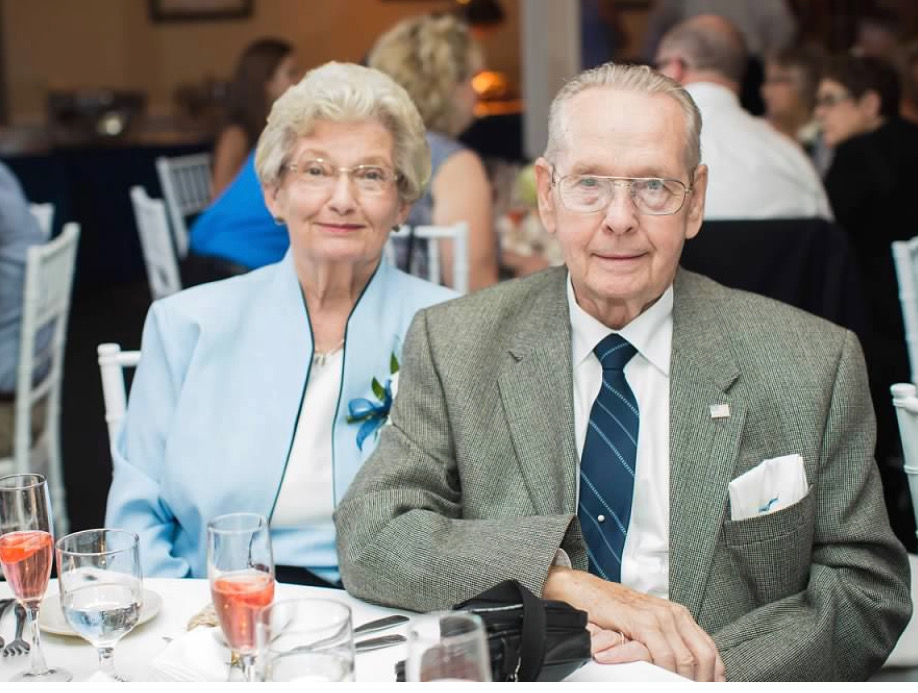My wife’s grandparents, Bill and Dorris, met as teenagers, just as Bill was joining the U.S. Navy. In the 67 years they’ve been together, since they wed in 1953, the pair have never spent more than two days apart… until this April.
Suddenly, Bill suffered a stroke and was immediately hospitalized at the University of Maryland Medical Systems (UMMS) for treatment. In the throes of a pandemic, new hospital regulations prevented our tight-knit family from accompanying him throughout his stay. Leaving a loved one alone to deal with a serious medical issue–in the midst of one of the greatest health crises of our time–was stressful to say the least. Feeling disconnected only added to the anxiety on both ends. It was then that my profession became personal.
As fate would have it, I have been the Cisco Account Manager for UMMS for the past two years. In this role, my team and I have worked with our partners–and the incredibly talented team at UMMS–to architect technology solutions that would meet the unique, evolving requirements of their industry. Earlier this year, almost overnight, we’ve had to suddenly re-imagine how UMMS could work differently to keep their staff and patients safe and connected.
In the healthcare sector, by definition, customer success has always been about providing the best possible patient care. But how are we to gauge success during this period? There is no tried-and-true use case to replicate, no playbook to follow for a modern pandemic. But there was what I’ve come to love most about Cisco – the relentless spirit to do whatever it takes. Within our DNA lies the only instruction manual we really need: do what is right for our customers and our communities. The challenges UMMS faced gave us the unique opportunity to serve both, so we got to work doing what we do best – marrying the technology and talent that would keep maintain critical communication when it was needed most.
To be sure that changes to the healthcare system didn’t impact the actual care itself, we had to be innovative and work quickly to enable healthcare professionals to work from home, to ensure that their communications systems are secure and allow them to meet their HIPAA compliance regulations, and even build field hospitals in a matter of weeks. At a time when a shortage of personal protective equipment means putting both the patient and our healthcare professionals at risk, we had to rethink and rebuild a robust telehealth platform. We did this through Jabber and Cisco Webex. This became the way in which doctors and nurses could provide care, the way that patients could feel comfortable presenting their medical needs, and the way that families could stay connected despite being physically apart.
The days working on setting up this new healthcare ecosystem for UMMS were long and exhausting, but I had a newfound conviction when Bill was hospitalized. The Cisco team rallied around me and, in a moment’s time, the very telehealth solution that we had been working on for “others” was used to connect us to Bill – the first of what would be hundreds of calls to connect patients to their loved ones.
Our family was brought to tears as we were able to see and speak with Bill on video. We were given the chance to reassure him, to see him through his frustration, and to settle our own fears. We could bridge the continuity of the nearly seven-decade strong relationship of Bill and Dorris. “Together” again. In sickness and in health as they pledged.

Today, the pair is reunited and Bill is recovering from his stroke faster than anyone expected. As for me, I’m grateful to the team for finding solutions to connect families like mine, glad to have Bill home and healing, and proud to work at a company that turns barriers into bridges.
The impact of our work is truly tremendous—on patients, families, and healthcare professionals. Hospital CEOs are emailing us directly to thank us for the experience of this technical rollout and support. We didn’t start this journey with UMMS as their sole technical partner; initially all their communications were standardized on another platform. However, with their newfound requirements, and the support we’ve been able to offer, they are now fully engaged with Cisco services only.
And I haven’t done it alone. My Customer Experience (CX) partners have been critical in establishing this relationship. Much of our support to UMMS during this time has been around collaboration tools, for which adoption is paramount. They’ve been at the front end of all our engagements with UMMS to assess their needs, brainstorm solutions, and determine a pathway to accelerate value.
We often miss the impact technology can have on our individual experience at a human level. The work we do is just as much about the people using our products, the way the products impact their lives, and their success, as it is about the product itself, and the business solutions.
Get a glimpse of that first call between Bill and Dorris:
Kyle, thank you so much for sharing this wonderful story! Kudos to all of the Cisco teams that are making these connections happen.
What a beautiful story!!!
Incredible story
What a great story! Thank you for sharing!
What a moving story! Love is Love